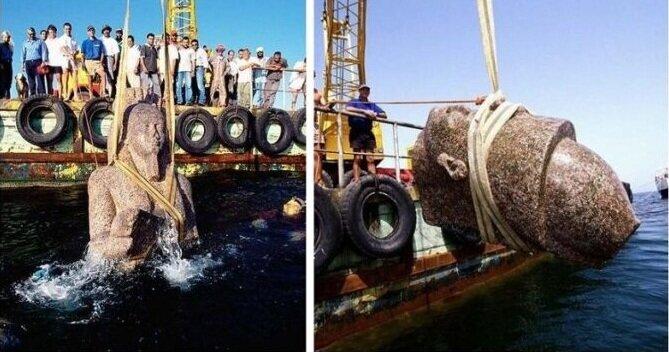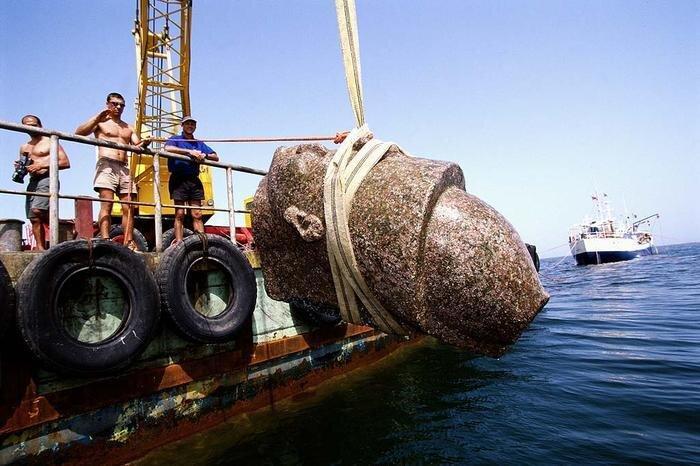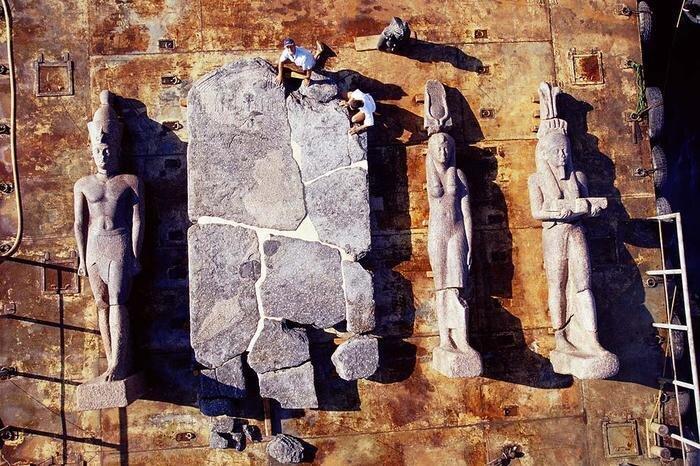Unearthed After 1,200 Years, the Ancient Egyptian City of Heracleion, Founded around the 8th century BC, Predated the Conquest of Alexandria in 331 BC and Stands as an Extraordinary Testament to Egypt’s Maritime Heritage, Welcoming All Ships Approaching the Greek World.
Discovered in the year 2000 by archaeologist Franck Goddio and the IEASM (European Institute for Underwater Archaeology), the treasure of Thonis-Heracleion had been lost for centuries, known to the Greeks as ‘Thonis.’ Its name had almost vanished from the memory of mankind, preserved solely in ancient classical texts and rare inscriptions found by archaeologists.
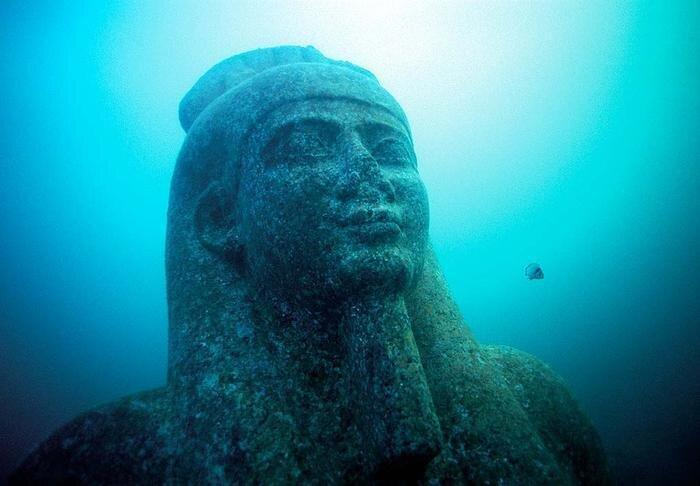
Employing his unique surveyed approach, Franck Goddio and his team from the IEASM were able to pinpoint, map, and explore the depths of the legendary city of Thonis-Heracleion, situated 6.5 kilometers off today’s coastline, submerged about 150 feet underwater. The city lies within an overall research area covering an impressive 11 by 15 kilometers in the western part of Aboukir Bay.
The discoveries included:
- The remains of more than 64 ships buried in the dense clay and sand that covers the seabed.
- Gold coins and weights made from bronze and stone.
- Gigantic 16-foot statues alongside hundreds of smaller statues of minor gods.
- Slabs of stone inscribed with both ancient Greek and ancient Egyptian.
- Dozens of small limestone sarcophagi believed to have held mummified animals.
- Over 700 ancient anchors for ships.
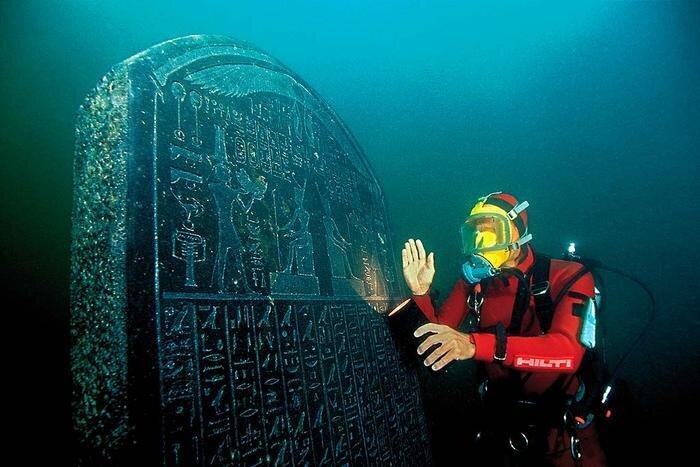
The reign of Heracleion from 378-362 BC
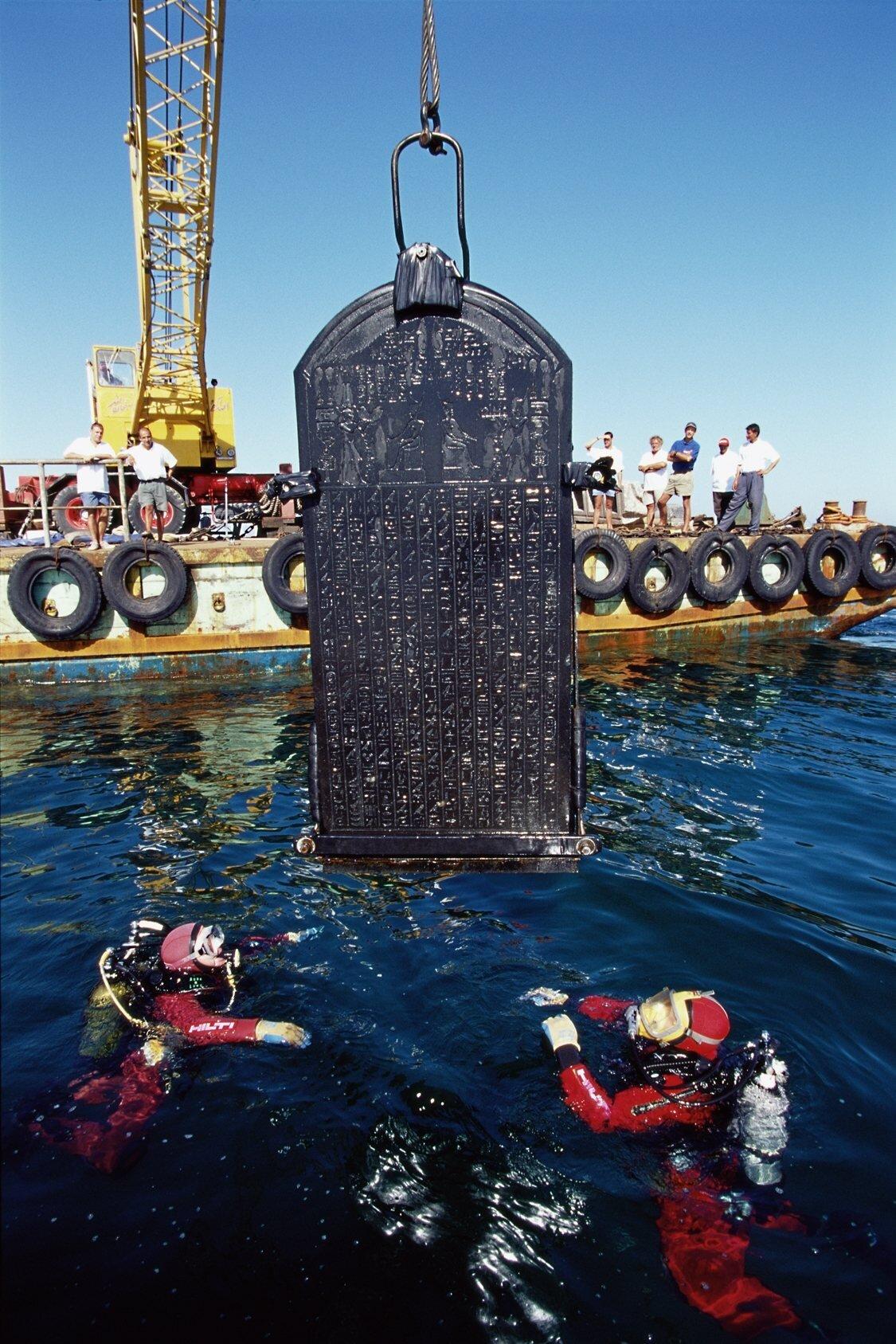
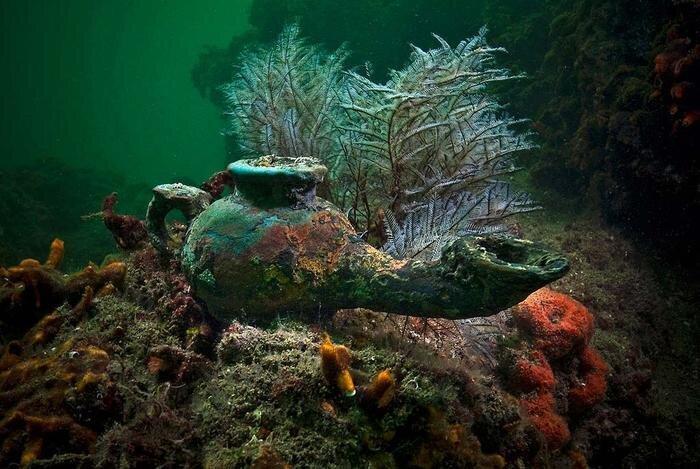
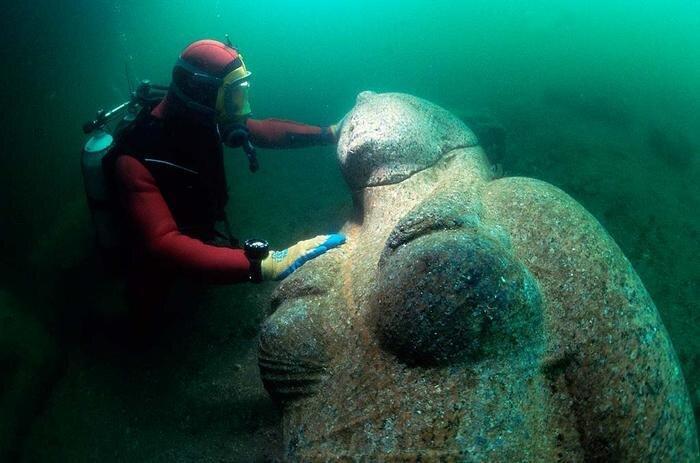
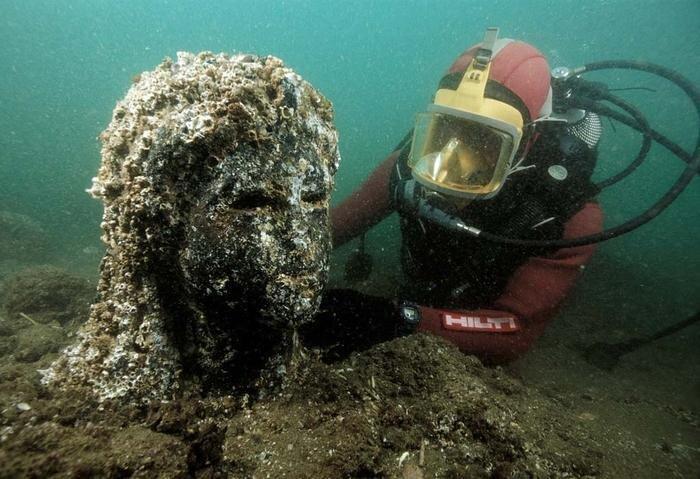
What led to the submersion?
Research suggests that the site was affected by geological and seismic phenomena. The gradual movement of subsidence of the soil affected this part of the south-eastern basin of the Mediterranean. The rise in sea levels also contributed significantly to the submergence of the land. The IEASM had geological observations that brought these phenomena to light by discovering seismic effects in the underlying geology.
An examination of the site also points to soil liquefaction. This localized phenomenon can be triggered by the action of great pressure on soil with a high clay and water content. The pressure from large buildings, combined with an overload of weight due to an unusually high flood or a tidal wave, can dramatically compress the soil and force the expulsion of water contained within the structure of the clay. The clay quickly loses volume, creating sudden subsidence.
An earthquake can also induce such a phenomenon. These forces, whether occurring together or independently, may have caused significant disturbance and explain the submergence of Thonis-Heracleion.
